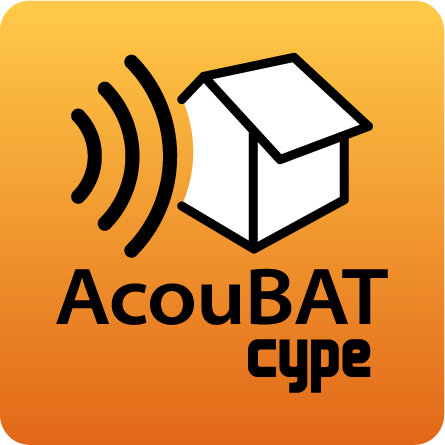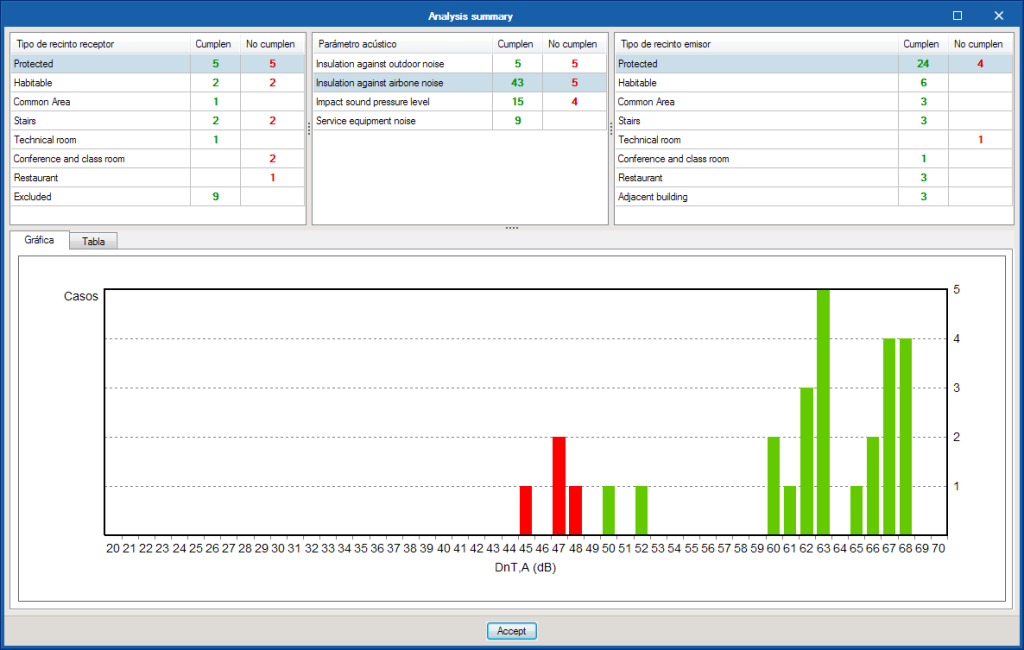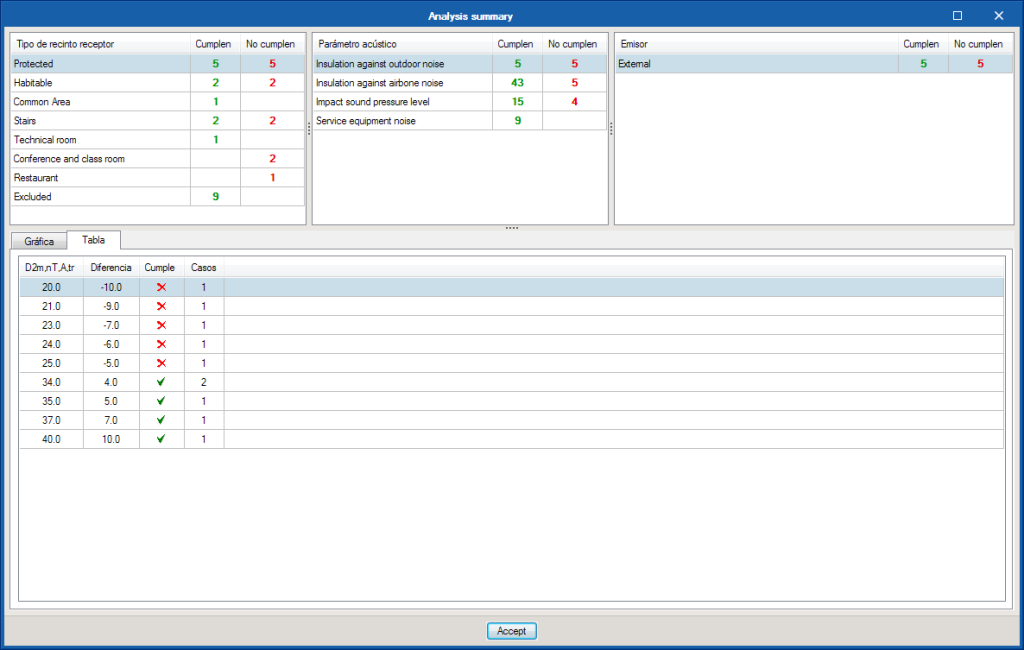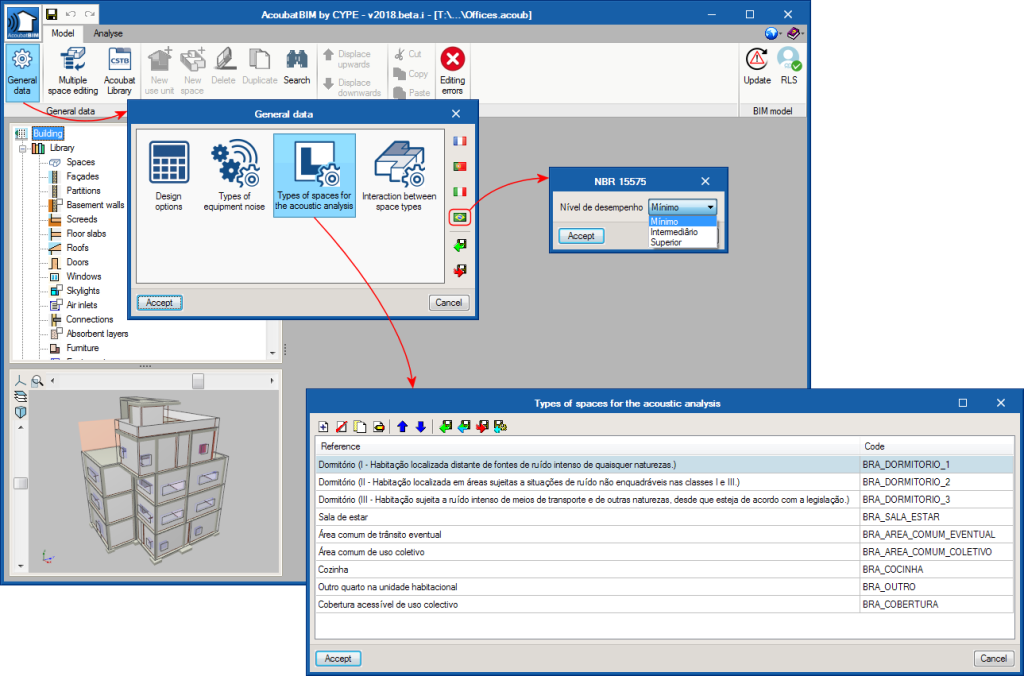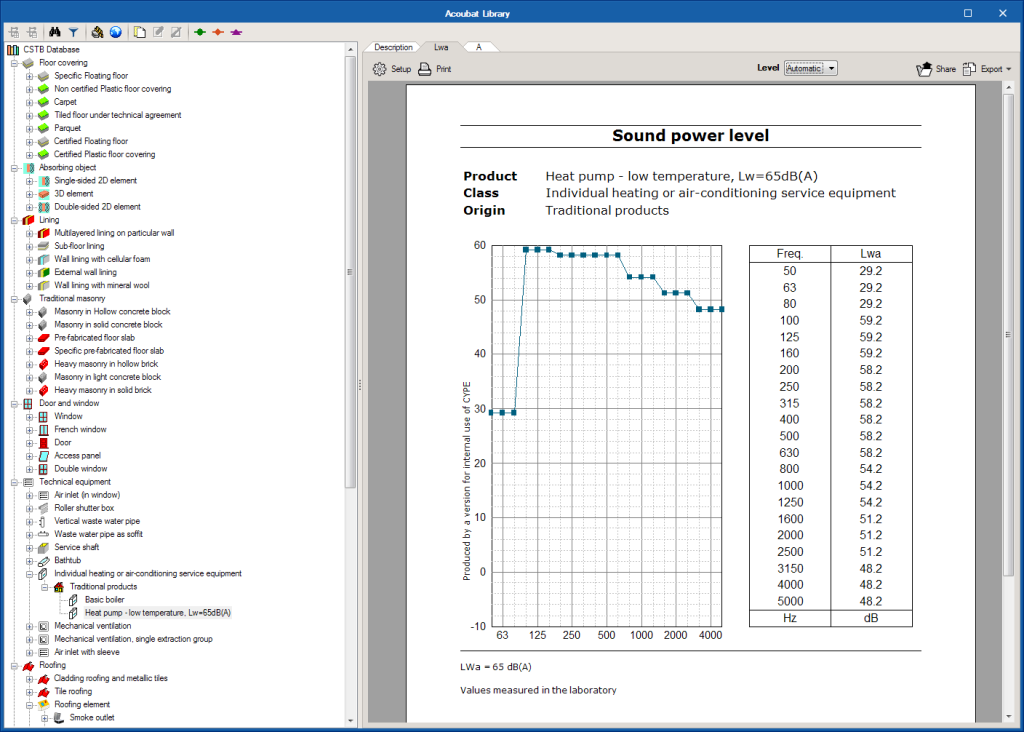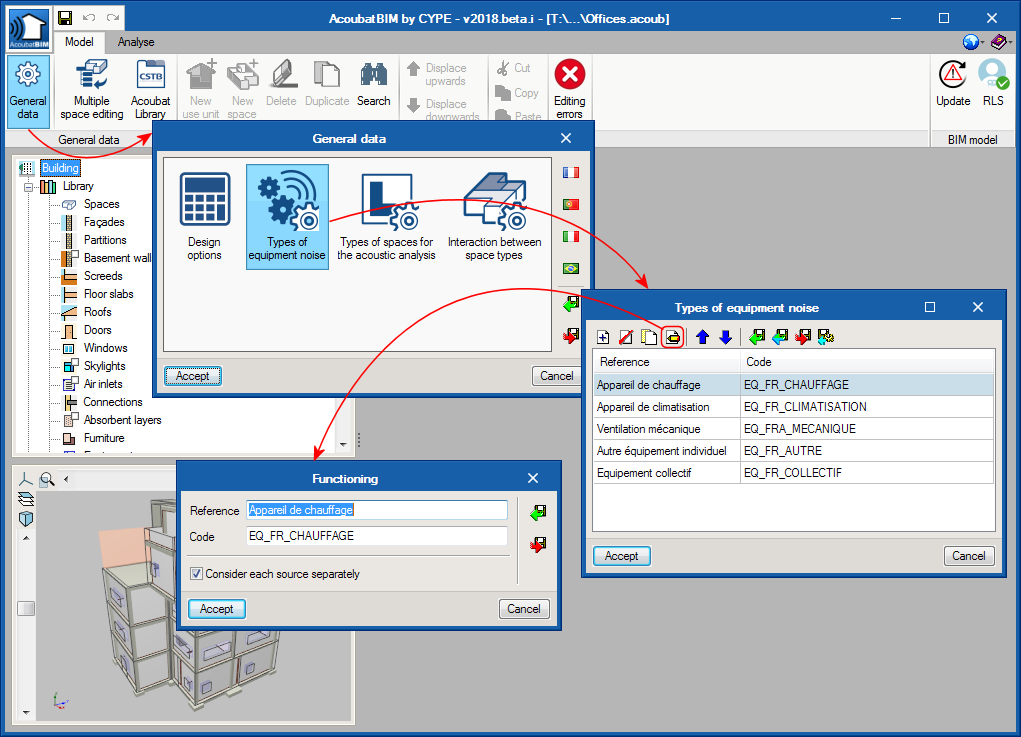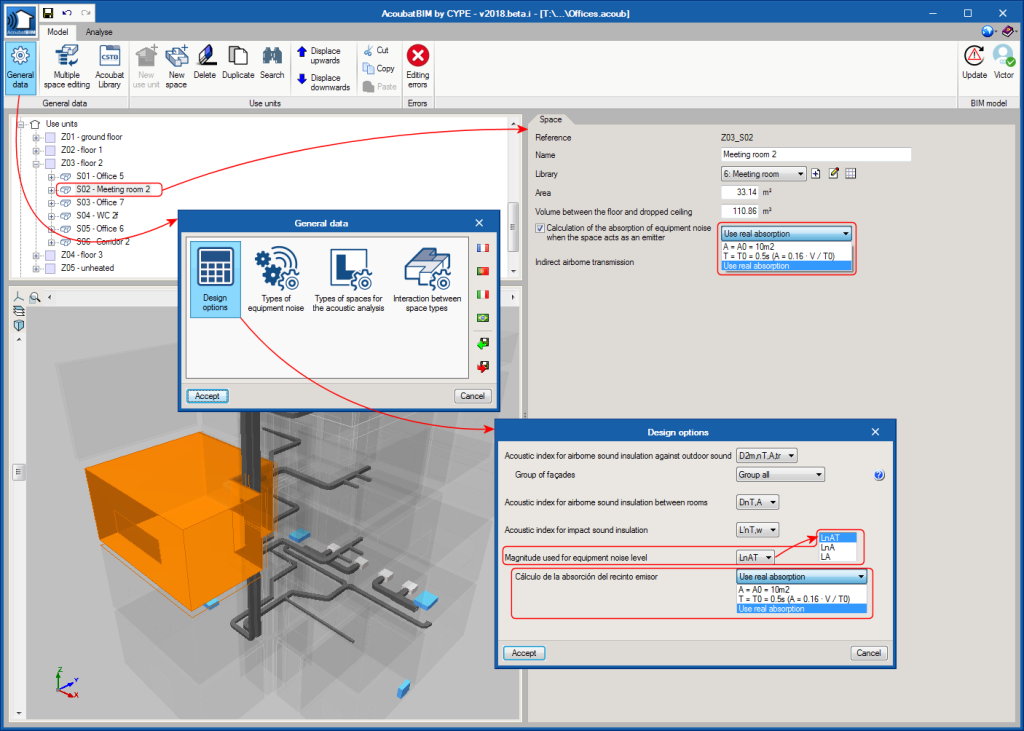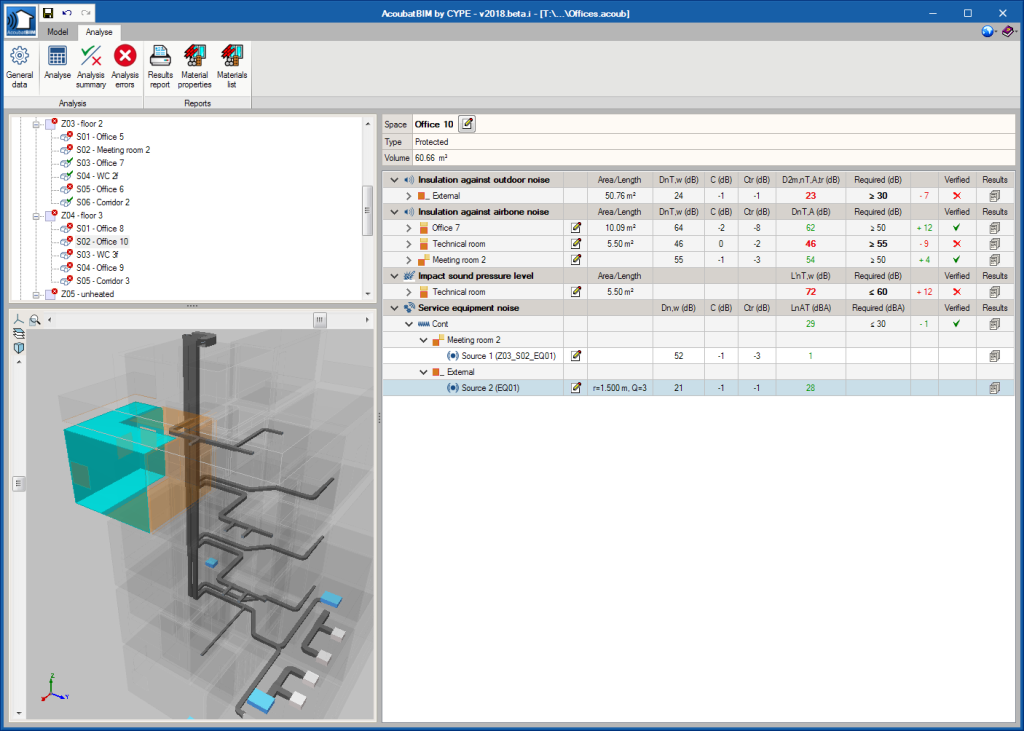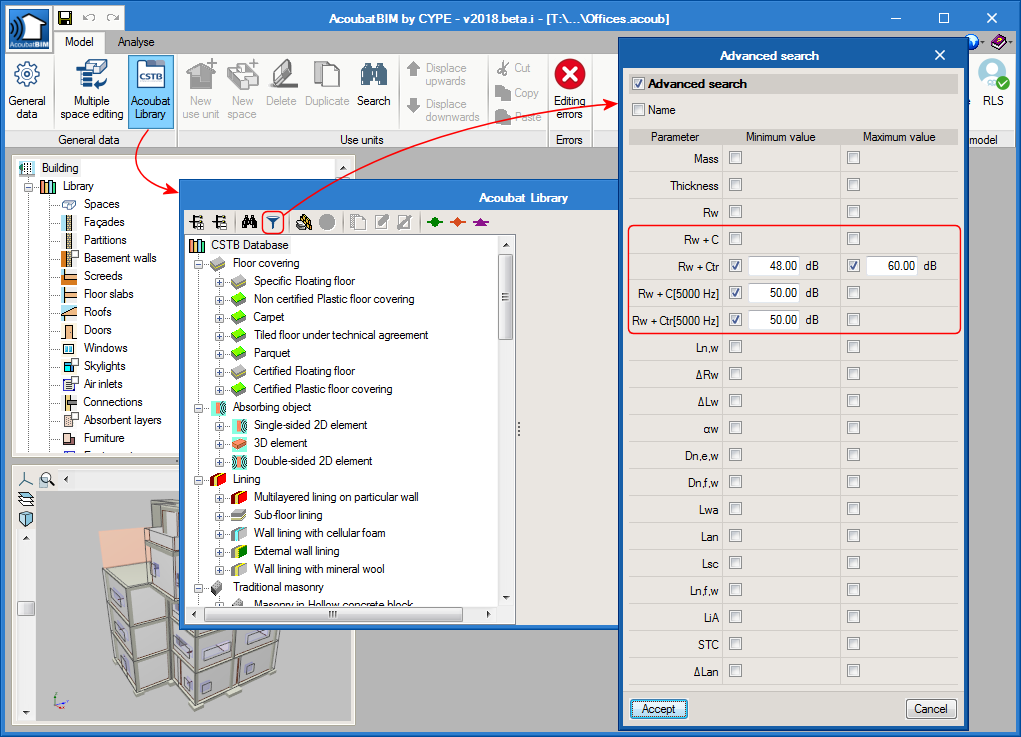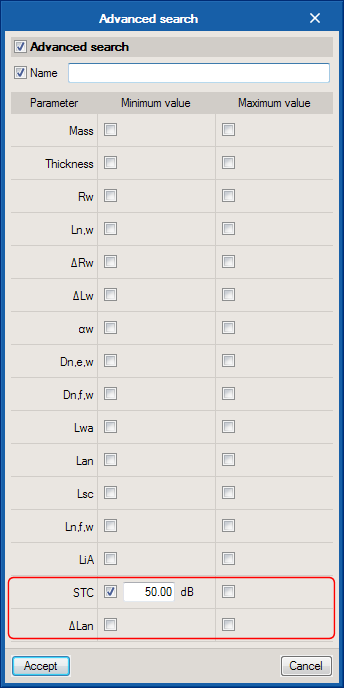The histogram the program shows once the program has finished the design process has been improved to offer a greater level of information on the global acoustic behaviour of the building. Now it is possible to inspect the receptor spaces of each class and show the results of each acoustic parameter separately.
As well as the graph, a table containing the values that are obtained has been added.

